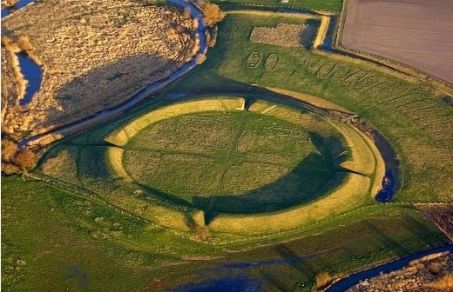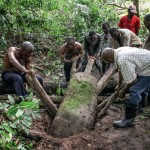
A Viking enclosure from the reign of Harald „the blue tooth“ was discovered south of Copenhagen.
A perfect circle! A ring to govern them all … Aerial surveys carried out using a LIDAR (airborne laser scan) revealed the presence of a Viking circular fortress in Borgring, south of Copenhagen, the Danish capital. Fitted to the X th century, it would be the first monument of this type met in Denmark for 60 years.
In a recent article published in the journal Antiquity, the authors argue that Borgring would belong to an enigmatic network of fortifications called Trelleborg, named after the original model found near Slagelse, Zeeland.
They are imposing ring fortresses for military and defense purposes. Consisting of a slope of wooden ramparts and earth lined with a V-shaped ditch, the fortress of Borgring, with a diameter of 150m, had four doors located at the four cardinal points.
In Denmark, only five constructions of this type, perfectly round, are currently known (Fyrkat, near Hobro, Aggersborg, Nonnebakken and of course Trelleborg). According to Soren Sindbaek, archaeologist at the University of Aarhus, these fortifications would have been erected in a very short time, between 975 and 980, under the rule of King Harald the blue tooth * ( Haraldr Gormsson ) (910-986) , The sovereign to whom we owe the unification of Denmark and its Christianization.

Why do these elevations intrigue? This is because the Vikings have always been perceived as small wren societies competing for power. And these structures built on a strictly identical plan, requiring extensive earthworks, suggest rather a concentration of labor, united in a common effort, Under the direction of a planning authority.
All were built in a similar environment: in the center of fertile regions, Close to main roads; With long houses inside; The outlets of rivers having access to open water; And in very visible places invulnerable to attacks from the sea.
These fortresses are the testimony of a degree of organization and centralization hitherto unknown in the Viking culture. Probably linked to a military situation of exception. When the Vikings had to face powerful external enemies, Slavs and Germans.
Harald „the blue tooth“ did not imagine that 1000 years after his death, his name was going to be given to a wireless computer connection!


